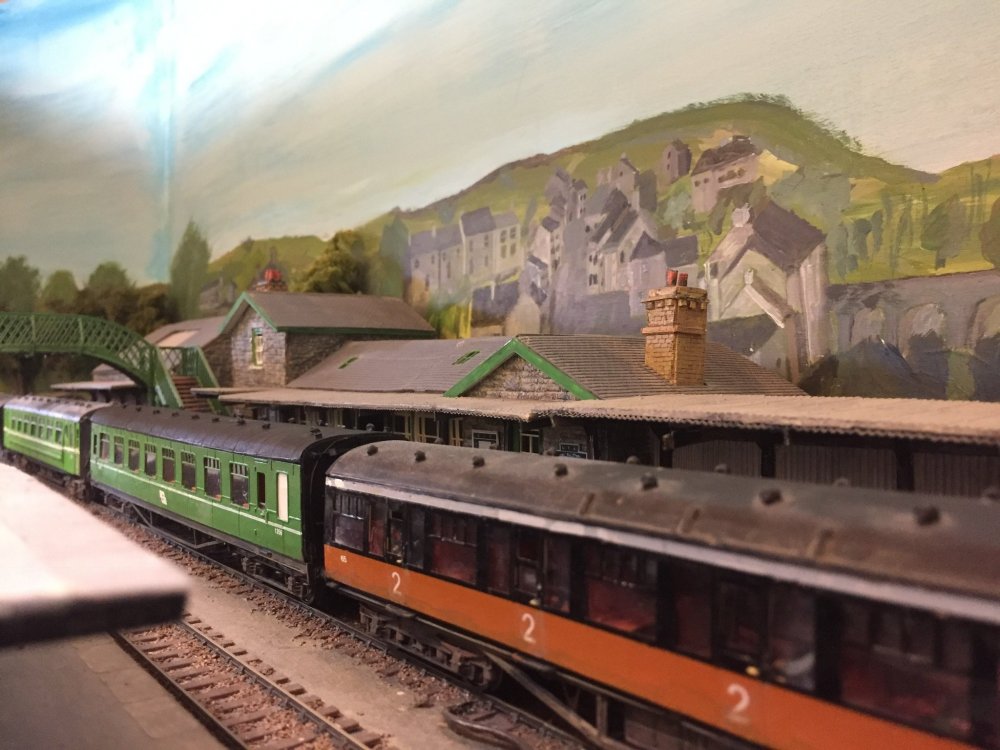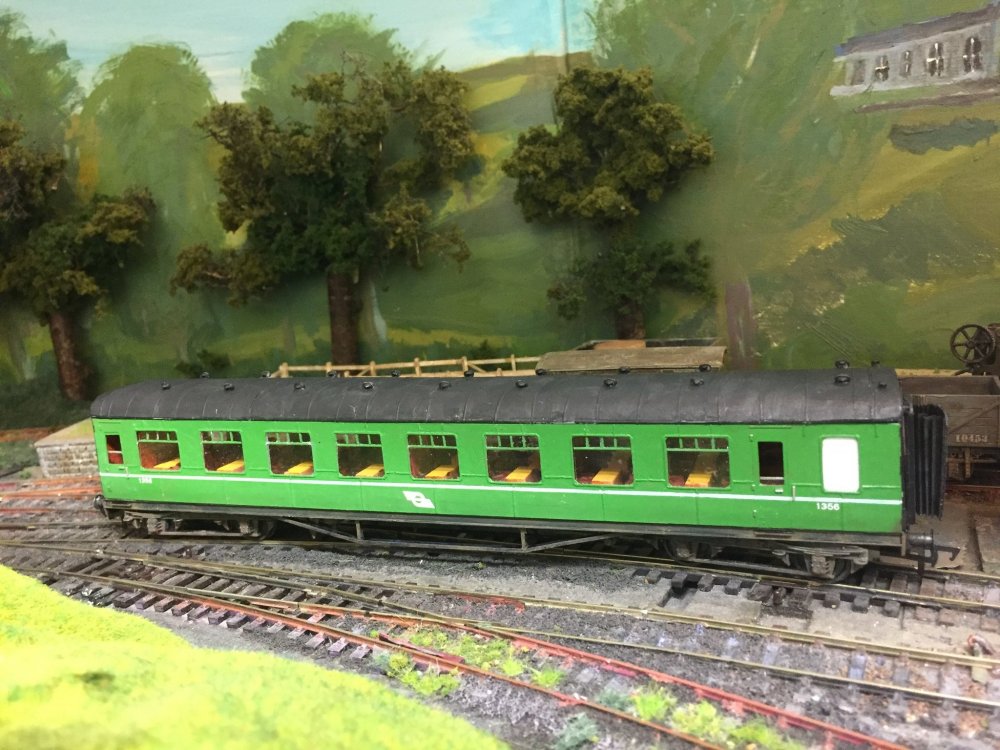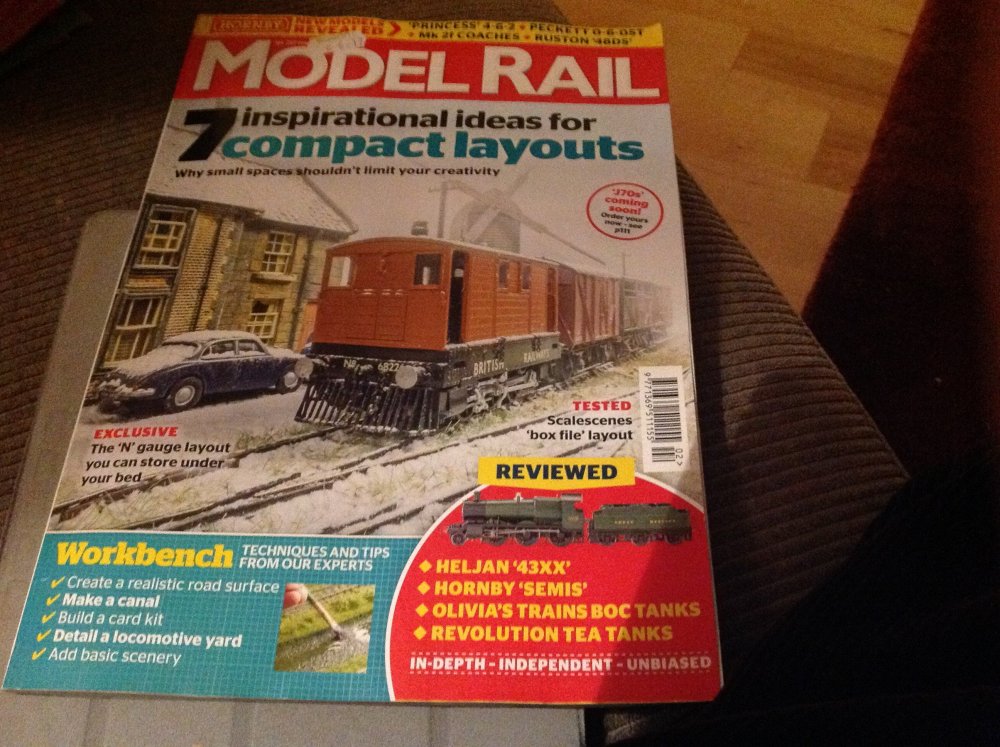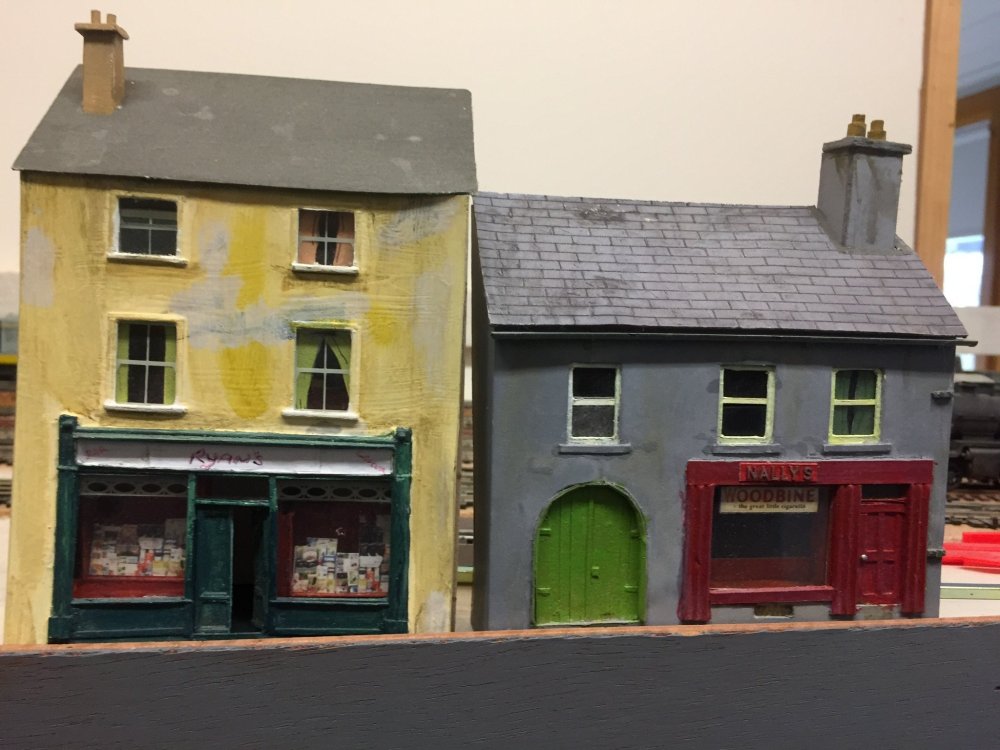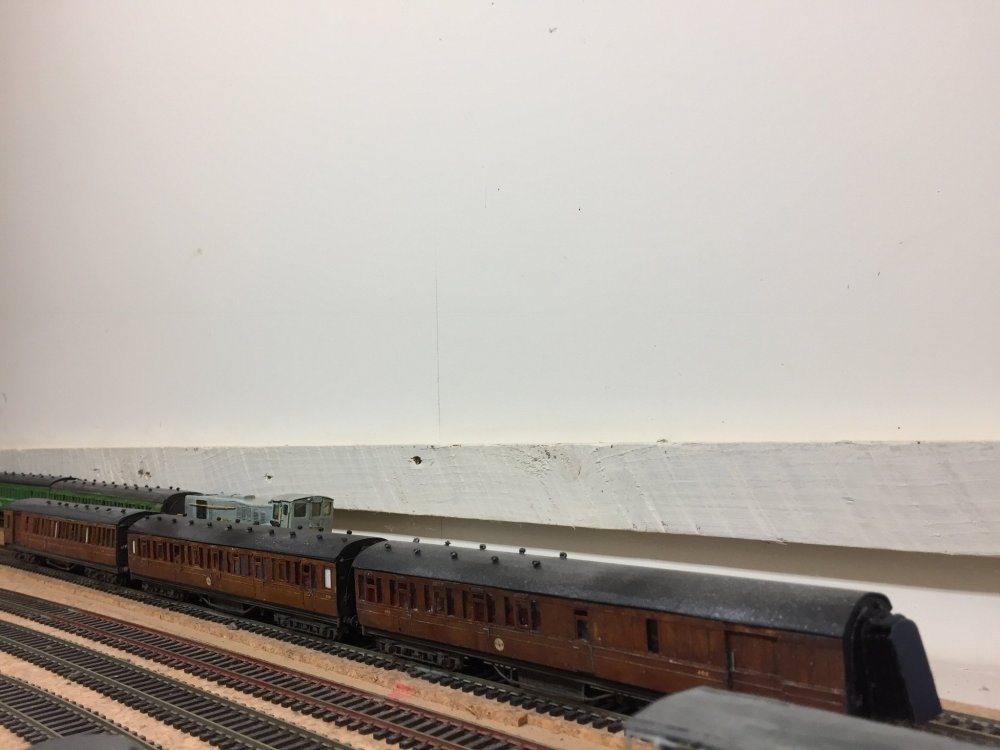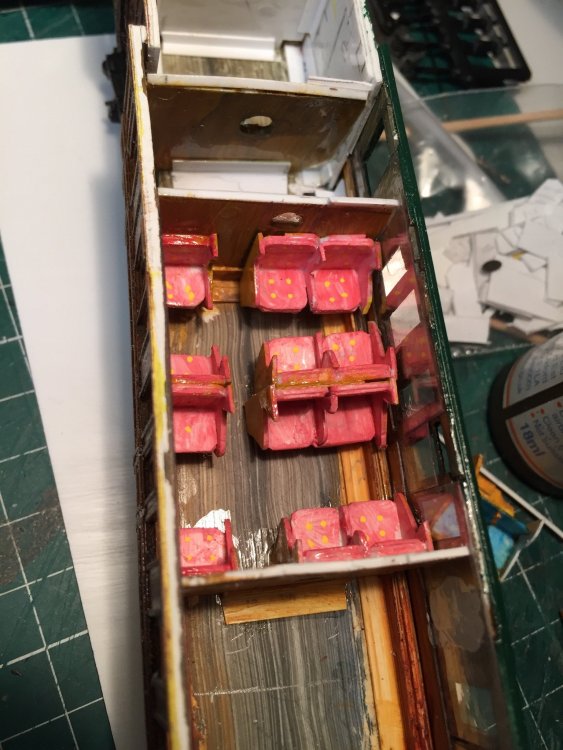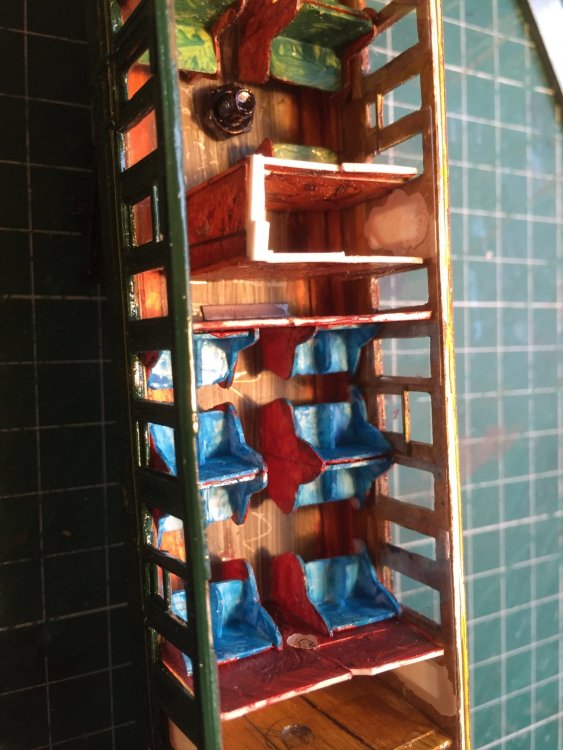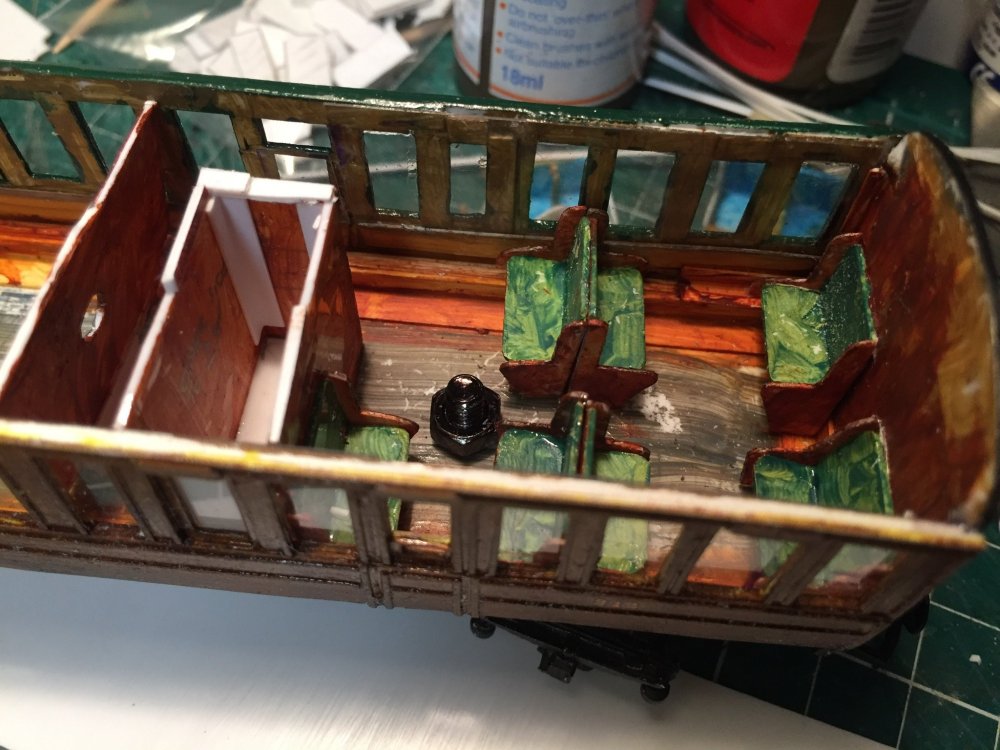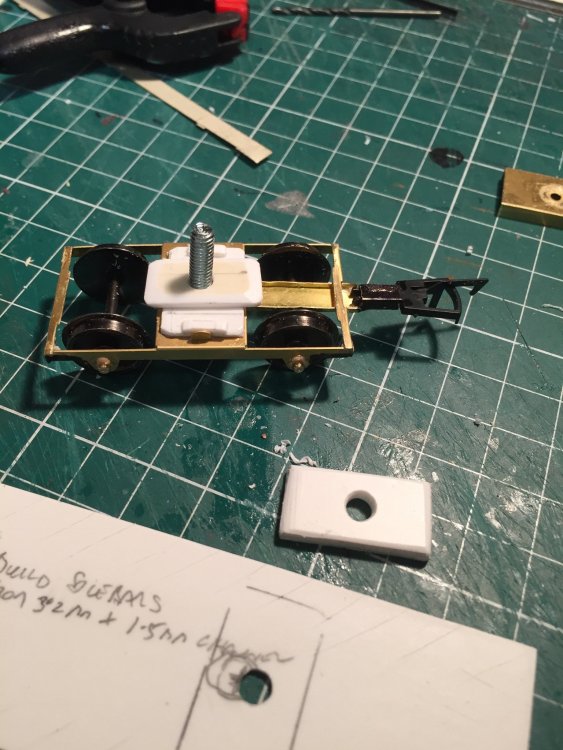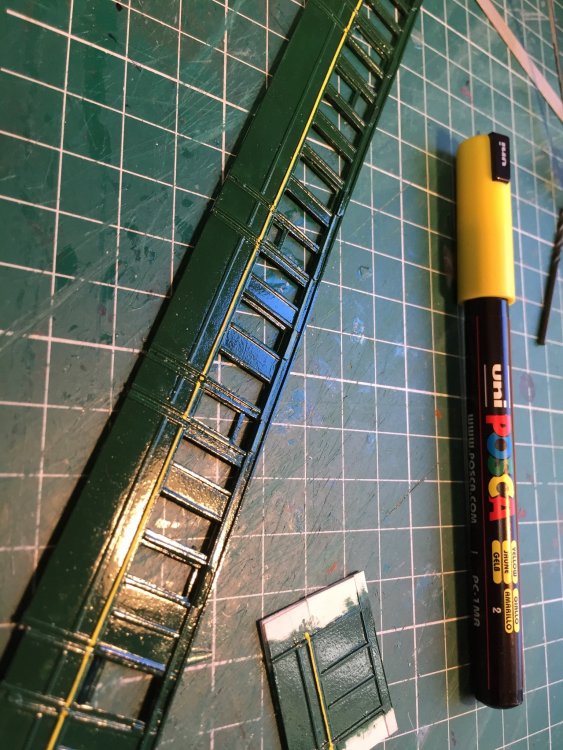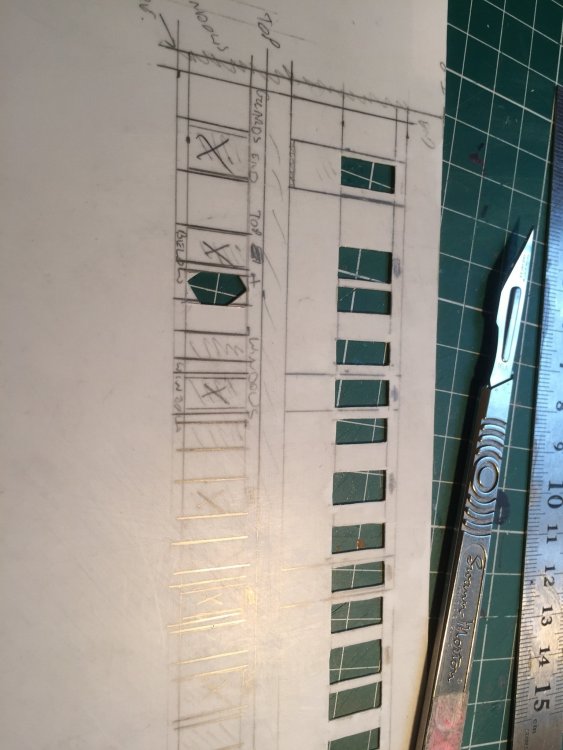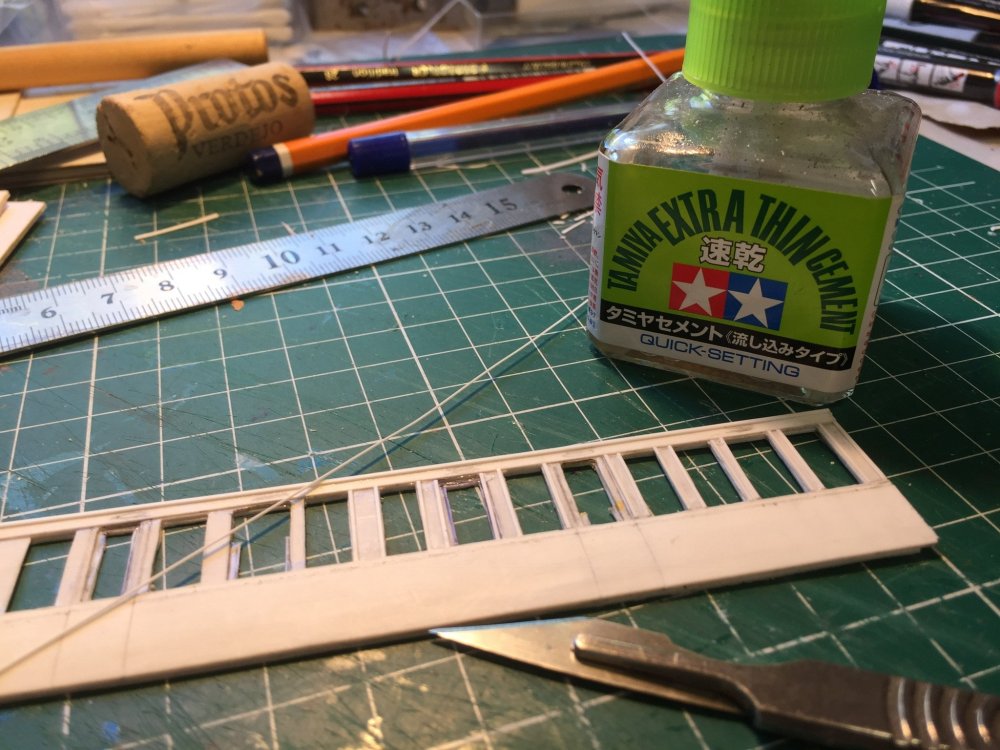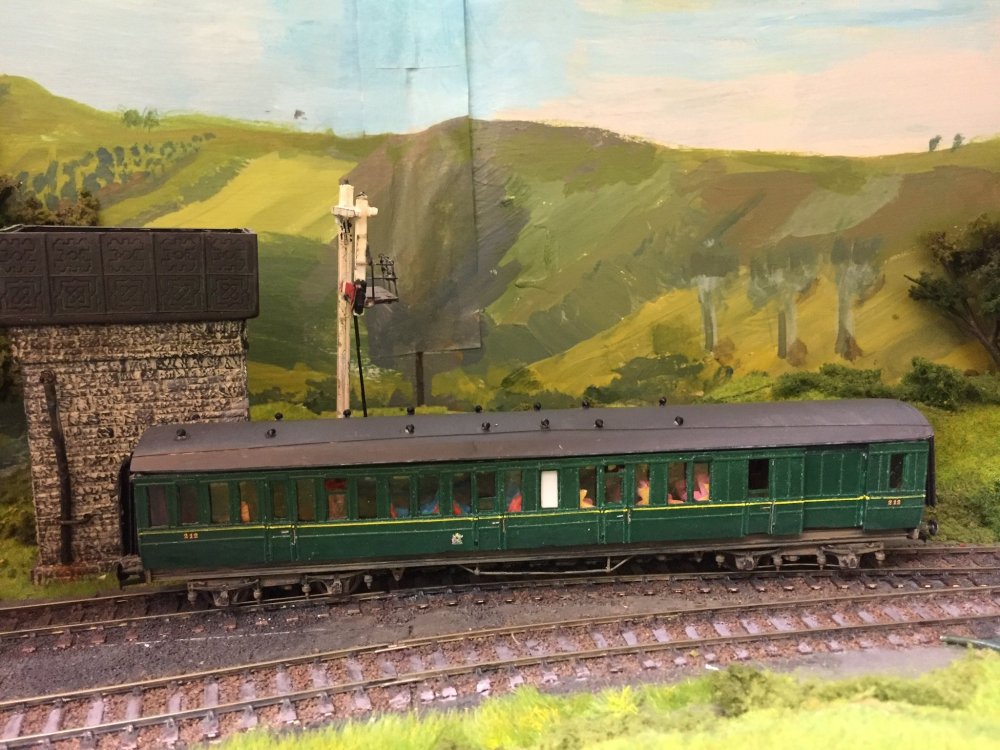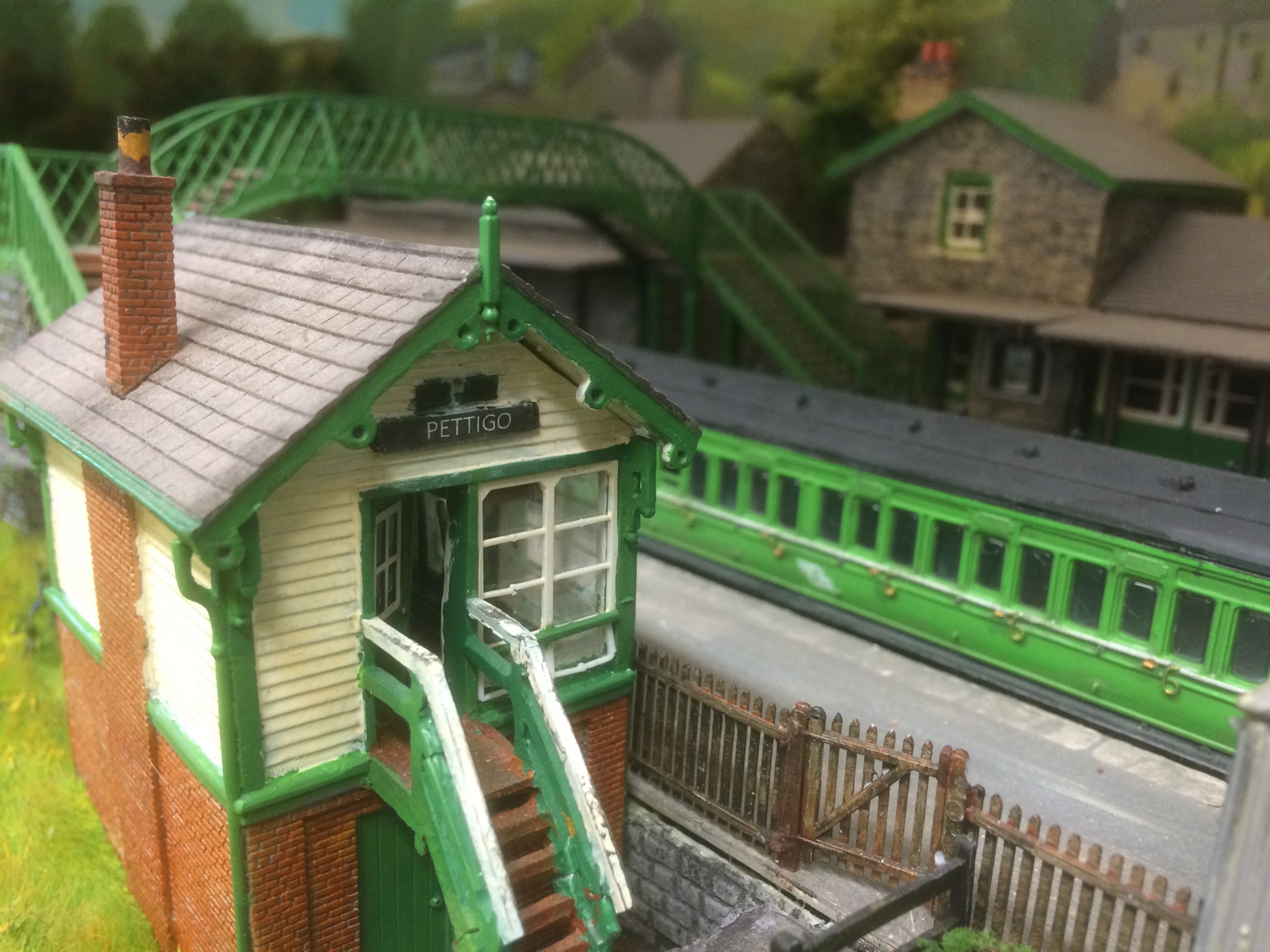
Glover
Members-
Posts
144 -
Joined
-
Last visited
-
Days Won
6
Content Type
Profiles
Forums
Events
Gallery
Blogs
Store
Community Map
Everything posted by Glover
-
CIE built their first coaches in 1951. Between then and 1956, they built a total of 101 bogie passenger coaches to what I would term a 'slab-sided' profile. That is, a turn under as per usual practice at the bottom of the coach side but no curve inwards at the top of the body. This gave them a very square-shouldered appearance and instantly recognisable in a CIE train of the 1950s to the early 1970s. The photo below attempts to show this, with a GNR K15 to one side and a Park Royal at the other end. The initial 6 coaches were built on 60' underframes but all others were on 61'6" frames. This is a summary of the types built: Standards (originally termed 3rd class and later 2nd) : 40 Composites : 38 Buffets :18 Brake/standards :5 It is a slightly odd list; did CIE really need so much 1st class accommodation (via the compos) in 1950s Ireland? Also, why so many buffets and so few brake/passenger coaches? I think the answer is: AEC railcars. In the early 1950s, the railcar was seen as the future but needed intermediate/trailer coaches, especially buffets for long distance travel. More notes to follow. Glover
-
At the end of the previous coach build, I mentioned that I was researching the first CIE built coaches. Well, the research has born fruit and here it is but I have to tell you, it nearly broke my bluddy heart. Anything that could go wrong etc. In part, this was due to poor strategic planning: the Objectives were conflicted which meant that the Strategies were all over the place and therefore the Plans were useless. Certain politicians in certain countries please note....... I'll follow up with some prototype notes and then some 'how not to go about building a coach ' pointers. Cheers, Glover
-
That is truly a Wall of Fame & Achievment David; you are entitled to feel a little pride in your work. Cheers Glover
-
CIE Laminate Coaches - Worsley Works - ECMbuild in 4mm
Glover replied to murrayec's topic in Irish Models
Eoin, There was a reference in an early 1960s issue of Irish Railfans News (available on the RPSI website at one time) which said that standard CIE seat colours were maroon in second/standard class and green in first class. I suspect that was the 'base' colour with floral type patterns giving a variety of shades. I'm trying to think back to CIE buses of that era; my memory would suggest that the coverings used on the RPSI coaches are rather too modern for the mid/late 1950s. A rummage around old furniture shops/auction rooms might provide some clues. Cheers, Glover -
Thanks Broithe, I've amended this. Cheers, Glover
-
Just a quick heads-up; this issue, number 257 features two Irish layout plans by Paul A. Lunn. They are Bantry and Bray, including Bray Head. Interestingly, both prototypes are currently featured as layout builds on this forum. There is also a review of the 00 Works J15. Cheers, Glover Glover
-
Those NZ model buildings are superb ; love the roof patches. Glover
-
Thank you for your suggestions gentlemen. Neither establishment would appeal to me, although I can't presume to speak for the GNR engineer, George Glover...... It does however prompt a thought; pubs with railway connections. Maybe we should form a task force to investigate all of those Railway Bars around the country. We could rank them in terms of their relevance to railways (plus of course the quality of the pint). Cheers! Glover
-
Bray loco shed ? Nice job. The layout of the loco yard at Bray would make an interesting little project on its own. The turntable was on the other side of the mainline, on the goods shed side. Glover
-
Lovely photos Irishrailwayman. It reminds me that an Irish street scene should ideally reflect local family names. For example, O'Shea, Sullivan etc in Kerry, Power in Waterford, Brady in Cavan etc. A layout set in Dublin might display more diversity although some would say that the pubs should be Ryan's or Brady's, on the basis that many publicans originated from Tipperary and Cavan. All decent men, let me say ( don't want to be barred from any such licensed premises!). Glover
-
I've just remembered that I did make two buildings some years ago for a layout which I subsequently abandoned. I would like to think that they are distinctively Irish. Glover
-
I very much concur with your views Mayner, although I would focus more on the townscapes rather than the countryside. It may be that as a city boy, I regard the country in terms of 'if you've seen one field, you've seen them all'! I jest but urban building styles were, until quite recently, regionally distinctive. Think about the contrast between north and south Germany or the distinctive differences between different parts of Britain. In Ireland , the use of bricks was largely on the east coast. Town buildings in Munster were often three storey compared to two story's in the west; a sign of greater prosperity ? I have in mind to build a town streetscape, as it might have appeared in the early 1960s. This would feature those older elaborate shop fronts, the modest pubs, sober banks and perhaps intimations of creeping modernity with a mini market type shop finished with that Formica type cladding. And of course shop names etc in a whole variety of different typefaces. I remember seeing the work of the guys in Wexford in the Railway Modeller some years ago; it just screamed Ireland, especially the south-east. Cheers, Glover
-
Thank you gentlemen. To Eoin's comment, the finish on the 1st class seats, complete with yellow buttons, was inspired by watching some Antiques Roadshow programme which featured an Edwardian armchair. I imagine that the railway company's were inspired by the fashions of the time when fitting out their coaches, especially 1st class. Of course, all of this becomes invisible as soon as you put the roof on; is this the road to madness?! Cheers, Glover
-
That's it for the moment. I'm not sure what's next, although I'm researching early/mid 1950s CIE built coaches, those post-Bredin/pre-laminates distinctively 'boxy' coaches. Scratchbuilding coaches, especially older wooden bodied ones is hard work but I think worth the effort. One final photo for GNR fans: an L9, K8 and J4 forming a short GNR train. Happy days!
-
As per my usual practice, I painted the other side of the coach in an alternative livery; GNR varnished wood in this case. Various photos confirm that the UTA prioritised painting more modern steel bodied GNR coaches into their green livery while older wooden bodied stock soldiered on in GNR colours up to the early 1960s. When I wrote about my L9 and K8 builds last year, JHB offered praise but also noted that the UTA symbols were never applied to these unpainted coaches. I didn't get a chance at the time to acknowledge JHBs comments; we were all a bit over run with the excitement of IRMs announcement of the A class Metro-Vicks! I would not dare to contradict such an eminent authority as JHB but photos by Des Fitzgerald taken on the Warrenpoint branch appear to support the idea that they did carry a symbol but which one........could it have been the GNR(B) roundal? The photos are all taken from oblique angles so it is not possible to be sure. So, I left them off but I have applied 'UT' lettering to the ends on the GNR painted sides. This appears to have been a standard feature in the early post GNR stock taken over by the UTA. Again I've used a Pocca pen to achieve this.
-
The interiors are scratch built from plastic. First class seats are painted in a sort of pink colour, 2nd are blue while 3rd are green. There is also a difference in the overall ornamentation of the seating woodwork. This is all from my imagination but I think consistent with how these things were done in days gone by.
-
I normally use Bachmann LMS bogies on my GNR coaches but the older wooden bodied coaches use a shorter wheelbase one, built by the Fox company. Closest I could find to these were Fox bogies made by MJT/Dart Castings. You are supposed to solder these together........plastic and super glue is your only man! I have to say that while they have turned out OK, they are somewhat fiddly to assemble and are also quite an expensive option compared to the Bachmann RTR option. I tried a new technique to achieve the UTA lining: Pocca fine lining ink pens (available in art supply shops). I rate this as a success ; much easier to apply than paint.
-
I had no proper drawing to work from, just some basic notes from Coakhams 'Irish Broad Gauge Carriages'. I did copy some measurements, (window sizes, panel widths etc), from the L9 and K8 coaches which I had previously built from Worsley Works parts. Working out the interior layout was a bit of a puzzle; there were WCs for each class. The basic build followed Geoff Kents series in the Model Railway Journal of some years ago. Basic material is 20thou plastic. It is a fairly tedious process marking out the plastic and then cutting. I used thin Evergreen plastic strips to reproduce the panelling.
-
The project of building five or six brake/passenger coaches to run through Pettigo (on the Bundoran branch) continues. What the GNR described as a J4 brake-trio (1st, 2nd and 3rd class) were a very popular coach on the Irish North Western lines. An article in New Irish Lines, November 2016, lists five of them taken over by the UTA on the disbandment of the GNR. Given that stock was divided 50:50 between the UTA and CIE, it is reasonable to suppose that CIE received five. They were built between approx 1916 and 1920. The UTA withdrew the last of theirs in 1967. Worsley Works list them on their web site but we're not available when I checked. Therefore, the only option was to scratch build..........easy to say! I've only scratch built one coach in my modelling lifetime and that was a GNR steel coach. It was also many years ago. Anyway, a photo; I'll follow up with some notes that might be of interest. Cheers, Glover
-
CIE Laminate Coaches - Worsley Works - ECMbuild in 4mm
Glover replied to murrayec's topic in Irish Models
Merciful hour!! Quality workmanship. I was 'ticked off' on this forum for using BR Commonwealth bogies; I didn't know the CIE ones were different to BR. Westhy/Studio Scale Models has mentioned on at least two occasions that he was planning to do a casting of the CIE version but I reckon it's still on his 'to-do' list. Glover -
That's a very nice "Yank", Noel. I have two white metal ones ; can't even remember if they were MIR or Q kits. Those handrails are a distinctive feature of those engines and not easy to get right. Pur her up on the front of your mail train! Cheers, Glover
-
One odd thing to note on the A class locos is the absence of a windscreen wiper over the non driving front window ( left hand side as you look at the loco). This appears to be more a feature of their earlier years; something else that didn't work on them?! I also remember reading that each loco was given an unofficial pet name; all were female names. That could provide an excuse to justify the purchase :" it's named after you, dear ". Then weather the thing!! Cheers, Glover
-
Hi Colin, Arrrgh!! I had to go out to the shed to measure it; its 2 degrees here at the moment! But, many thanks for taking an interest in my efforts. Height is almost 28mm. I suspect I used something like 2mm Evergreen strip; I didn't keep a specific note . It was added to the top of the bodyside. Width is only slightly wider than the original Tri-ang/Hornby but I now generally build to 38mm width. Yes it does look more than a bit narrow gauge when viewed end on but certainly on my layout, virtually all views are side on. To my mind, the advantage of building to, more or less, the full Irish width is that it gives you a more correct roof profile. It does require some brutal work with a hacksaw to reduce these coaches to body sides only, which is really the only part of the originals I used. Can I apologise in advance if you have other questions ( and please ask away) but I'll be off-air for the next few days , so I may be somewhat tardy in responding. Meantime, give it a go! Cheers, Glover
-
On the question of light V dark green, can I quote the following:" ....the following emerged over the next few months in the dark green livery with waistband : A10, 11,15,24,25,34,45,51,54,57,59 &60. So by late 1959, one loco us in light green (A46) , 13 in light green, and the rest in varying stages of the fifty million shades of silvery grey!" Also:" from 1960 the lighter version began to appear on all locomotives on a wide scale". Off course, some might consider the source of this information to be very unreliable ......one JHB 171 Achill!! Yes, you! January 5 2013 on this very forum. Chuckling, Glover
-
Somebody has to ask the question: will there be space to fit a smoke unit to the original Crossley engined versions.............. Glover (for the avoidance of doubt, tongue in cheek)
.png.c363cdf5c3fb7955cd92a55eb6dbbae0.png)
